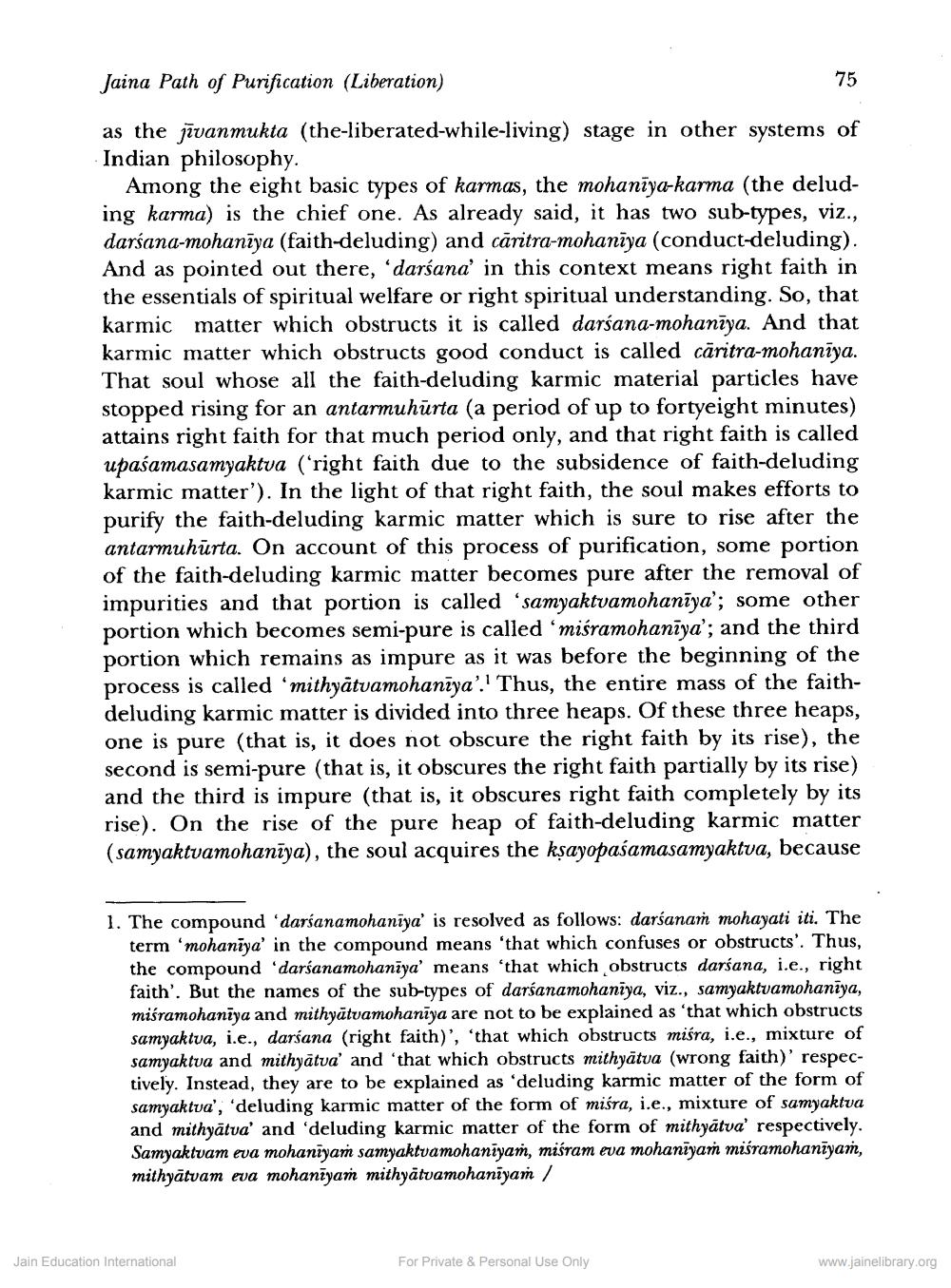________________
Jaina Path of Purification (Liberation)
75
as the jīvanmukta (the-liberated-while-living) stage in other systems of Indian philosophy.
Among the eight basic types of karmas, the mohanīya-karma (the deluding karma) is the chief one. As already said, it has two sub-types, viz., darśana-mohanīya (faith-deluding) and cāritra-mohaniya (conduct-deluding). And as pointed out there, 'darśana' in this context means right faith in the essentials of spiritual welfare or right spiritual understanding. So, that karmic matter which obstructs it is called darśana-mohanīya. And that karmic matter which obstructs good conduct is called caritra-mohaniya. That soul whose all the faith-deluding karmic material particles have stopped rising for an antarmuhurta (a period of up to fortyeight minutes) attains right faith for that much period only, and that right faith is called upaśamasamyaktva (‘right faith due to the subsidence of faith-deluding karmic matter'). In the light of that right faith, the soul makes efforts to purify the faith-deluding karmic matter which is sure to rise after the antarmuhurta. On account of this process of purification, some portion of the faith-deluding karmic matter becomes pure after the removal of impurities and that portion is called 'samyaktvamohanīya'; some other portion which becomes semi-pure is called 'miśramohanīya'; and the third portion which remains as impure as it was before the beginning of the process is called 'mithyātvamohaniya'.' Thus, the entire mass of the faithdeluding karmic matter is divided into three heaps. Of these three heaps, one is pure (that is, it does not obscure the right faith by its rise), the second is semi-pure (that is, it obscures the right faith partially by its rise) and the third is impure (that is, it obscures right faith completely by its rise). On the rise of the pure heap of faith-deluding karmic matter (samyaktvamohaniya), the soul acquires the kşayopaśamasamyaktva, because
1. The compound 'darśanamohaniya' is resolved as follows: darśanam mohayati iti. The
term 'mohanīya' in the compound means 'that which confuses or obstructs'. Thus, the compound 'darśanamohaniya' means "that which obstructs darśana, i.e., right faith'. But the names of the sub-types of darśanamohaniya, viz., samyaktvamohaniya, miśramohaniya and mithyütvamohanīya are not to be explained as 'that which obstructs samyaktva, i.e., darśana (right faith)', 'that which obstructs mišra, i.e., mixture of samyaktva and mithyātva' and 'that which obstructs mithyātua (wrong faith)' respectively. Instead, they are to be explained as 'deluding karmic matter of the form of samyaktua', 'deluding karmic matter of the form of miśra, i.e., mixture of samyaktva and mithyātva' and 'deluding karmic matter of the form of mithyātva' respectively. Samyaktvam eva mohaniyam samyaktvamohaniyam, miśram eva mohaniyam mišramohanīyam, mithyātvam eva mohaniyam mithyātvamohaniyam /
Jain Education International
For Private & Personal Use Only
www.jainelibrary.org




